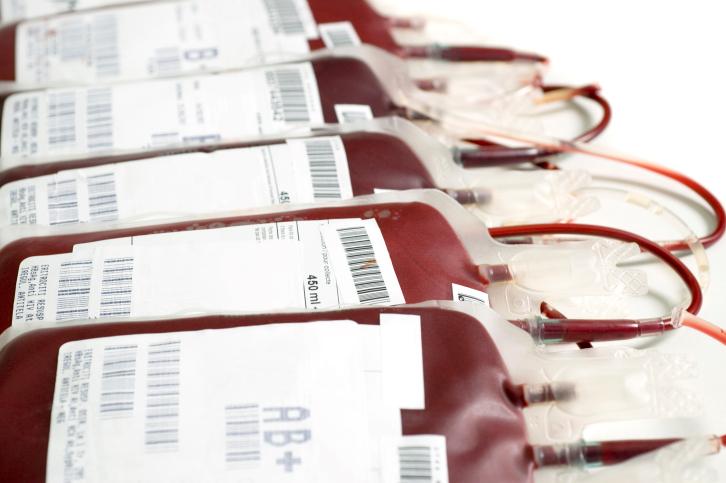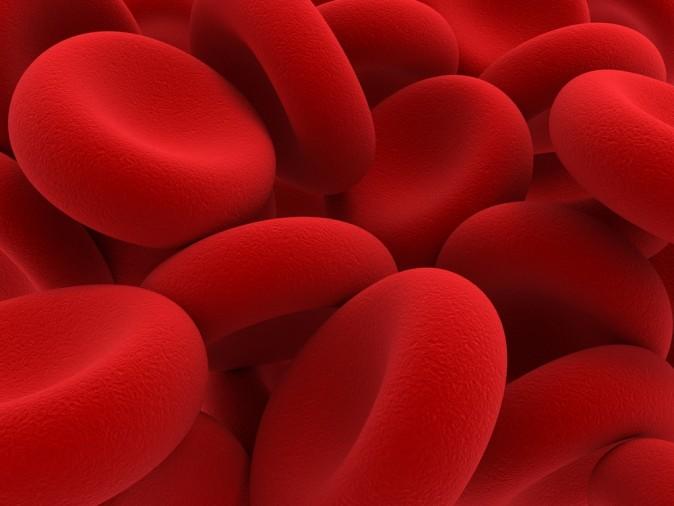The ‘grey area’ looks more blue, thanks to the rows of blue lab coats standing guard. Its name refers to its function as a purgatory between the ‘white’ blood factory behind one door and the contaminating darkness of the world outside (the ‘black rooms’) behind the other.
There’s an imperceptible increase in air pressure as we enter the whiteness. The positive pressure in the hall prevents any bugs or dust motes that might have snuck past all the vigorous cleaning and covering we do from entering the lab.
Every day of the week, bags of donated blood collected throughout southwest England, the Midlands and part of the South-east start arriving here just after midday, until 11 p.m. By 7 a.m., row upon row of them are hanging from hooks, blood creeping slowly down the plastic tubes. Red blood cells and plasma pass through the filters, which remove the larger white blood cells, and collect in the bags below.
Meanwhile, test-tubes containing a sample of each donor unit are sent to the testing department. All donations are tested to determine blood group and Rh type. The red cells are also tested for viruses – including HIV and hepatitis B and C – and for syphilis and malaria (a discretionary test, depending on the likelihood that the donor has been exposed to the parasite).
There isn’t yet an adequate test for Creutzfeldt–Jakob disease, or CJD, an incurable, degenerative neurological disorder thought to be transmitted through blood. Computer records of the test results are kept for 30 years, in case people want to track down which tests have been performed on a particular unit of blood.
The bags containing the red blood cells and plasma are spun in a large centrifuge, 12 at a time, to separate the cells from the plasma. The denser red cells separate to the bottom, and the plasma rises to the top. The plasma is usually a yellow colour, but it can be a greenish hue if the donor is on the contraceptive pill. Cloudy plasma can indicate high levels of fat in the blood. Although this can indicate a health problem for the donor, it is often an indication of nothing more than them having eaten a fatty meal before donating. The plasma is drawn into a separate bag by a machine. A sensor detects the presence of haemoglobin, which is what gives red blood cells their colour, prompting the operator to stop the machine when all the plasma has been removed.
Platelets, which help blood to clot, can be separated out of whole blood before it is filtered. The platelets can be kept alive for seven days on trays that move back and forth, allowing them to respire. The plasma is particularly useful to burns victims because it helps to build blood volume.
The condensed red blood cells, now in their own separate bag, are stacked on shelves in the cold-storage fridge at 4°C (39°F), ready to be sent out to hospitals. A unit of donor blood makes around half a pint, or 280 ml, of red blood cells.
Rare blood (shared by 0.1 per cent or less of the population) goes through exactly the same process, but ends up on a separate shelf. Some units will be sent to Liverpool and frozen for up to ten years. The same goes for very rare blood (shared by under 0.01 per cent of people) – except this blood is taken through the entire process on its own, by one person. It’s too precious to risk any mistake. Hospitals and research laboratories pay the standard £125.23 ($201.76) for a bag of blood, regardless of how common or rare it is.
Everyone who works here understands how crucial it is to protect the blood they are working with (and themselves) from contamination. When the factory flooded in September 2012, the first priority was to get the crates of blood further away from the floor than they already were, and the second was to attend to the electrics. As a result no blood stocks were lost, and the critical incident team who led the cleanup won a Business Continuity Institute (BCI) European Award for Most Effective Recovery of the Year.
Republished with permission from Mosaic Science. Read the original.

